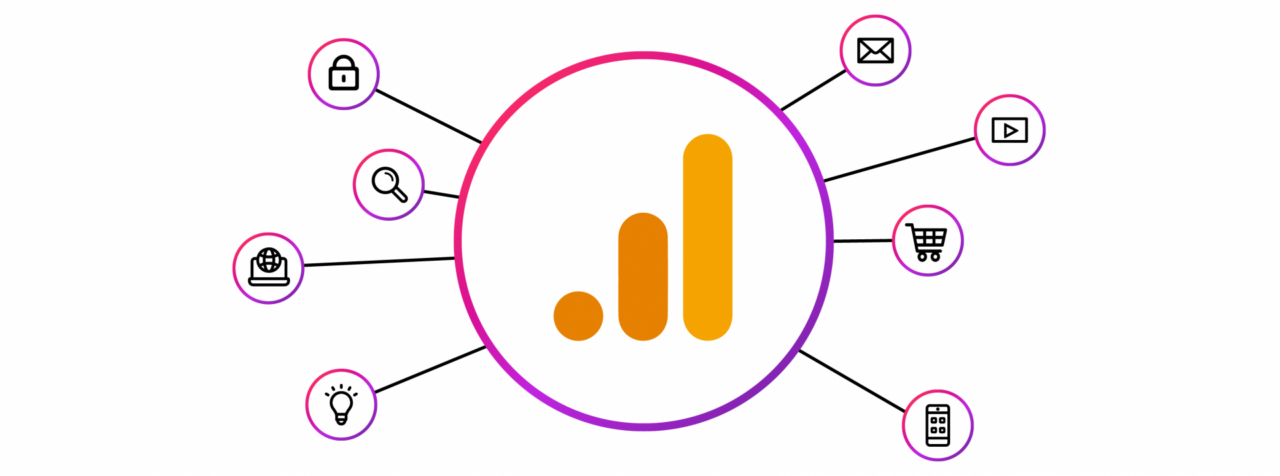Change is never easy. But if technology has taught us anything, it’s that change is constant. At the end of 2020, Google unveiled its new Google Analytics 4 (GA4), formerly known as App + Dev. While the new platform has received mixed reviews from users, it’s worth taking a closer look at its capabilities—and what it means to your business—since it’s here to stay.
Why a new version? And why now?
Since the inception of Google Analytics a whopping 16 years ago, there have been several updates but no major overhauls to the Google platform—which, in many ways, is a relief for marketers who have become quite proficient (and complacent) with it. However, changes in how we navigate the web have called for changes in how we measure web usage.
By launching this new product, Google’s aiming to stay ahead of the curve in various ways, from privacy to machine learning and more. And as a marketer, you can benefit greatly from all of this.
The rise of mobile users and the need to unify analytics
When Google Analytics was first implemented, mobile usage was nothing like it is today. The rise of mobile has created a growing demand for an integrated tool that allows marketers to understand how their consumers behave across different platforms. Sure, add-ons like Google Analytics for Firebase allowed for tracking mobile interaction, but nothing unified every platform in one dashboard. Google Analytics 4 is here to fix that.
The end of third-party cookies and the rise of privacy concerns
It’s not surprising to see third-party cookies disappearing from the proverbial digital menu. With the rise of privacy compliance laws such as the GDPR and CCPA, among others, data tracking as we know it is on the way out. Early this year, Google launched a privacy-focused solution named Federated Learning of Cohorts (FLoC). Designed to bundle large groups of people with similar interests and serve them more relevant ads, this initiative will preserve the accounts’ anonymity and users’ privacy while also helping marketers reach their target audiences. While GA4 itself is not yet cookie-less, it will eventually allow you to stay ahead of the game by providing a suite of privacy features, from region-specific audience personalization to a new Consent mode product.
Machine learning and insights
So, how are you supposed to understand your users’ online journey without cookies? One of the solutions Google is cooking up is advanced machine learning insights. With a robust predicting system, GA4 will (soon-ish) be able to help you anticipate consumer behavior with less data than it needed before.
With GA4, everything is an event
One of the main differences between GA4 and Universal Analytics (UA), Google’s previous generation of Analytics, is how they measure users’ interactions with your website. On UA, each hit is seen differently, focusing on individual page metrics and sessions; on GA4, they’ll fall under what’s called “events.” A purchase will be an event, a visit will be an event, and so on. You’ll still be able to create tags to understand and categorize the different events but, overall, this will allow you to see the bigger picture and focus on your customer’s journey through the marketing funnel.
Google Analytics 4 vs. Universal Analytics
Since there are several differences between GA4 and UA, we went ahead and created this quick recap:
- New layout: If you’re an analytics veteran, it’s safe to say that the main difference you’ll notice in the new GA4 is the user interface. While the UA dashboard featured three tiers of data organization (Account/Property/View), on GA4 there are only Account and Property. In addition, certain data elements will also be named differently: You’ll see Events, Parameters, User properties, and User ID.
- Redefined metrics: As mentioned above, GA4 uses a different measurement model based on events and parameters instead of sessions and pageviews. In GA4, events can help you track the way users are interacting with your website on desktop or mobile by measuring pageviews, button clicks, user actions, or system events.
- Enhanced reporting features: While users have access to many customizable reports on UA, GA4 will only show top-level reports. If you want specific reports, you’ll need to open the Analysis tab. On the upside, you’ll have more flexibility accessing and visualizing the data that matters to you.
- More out-of-the-box interactions: With Enhanced Measurement, you’ll unlock a series of event-tracking features to collect more data right out of the box. You’ll be able to track different events without having to customize your setup like before.
You won’t need to switch just now
While Google has already rolled out GA4, we highly recommend that you start using it in conjunction with UA, at least while it’s brand new. We do expect GA4 to replace UA as the only Google Analytics platform eventually, but you can rest assured that you’ll have the time to learn the ins and outs before that occurs.
Plus, our data experts are already exploring new possibilities to ensure we can deliver all the insights you need to keep your brand ahead of the competition. If you have any questions, don’t hesitate to speak with us today.



